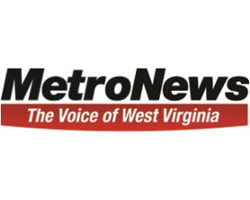My sincere thanks to Senator Brian Helton for joining Talkline Tuesday. Debate is essential — and in an energy state like West Virginia, more debate on energy policy isn’t just healthy, it’s necessary.
Before diving in, I’d suggest reading my earlier commentary on this topic or catching Tuesday’s interview with Senator Helton (above).
Energy is a complicated subject; details matter — good or bad, that’s the way it is.
And apologies in advance for a bit of a lengthy piece today. My pen just wouldn’t stop.
Where We Differ
Fundamentally, Senator Helton and I disagree.
He believes requiring utilities to run coal plants at least 69 percent of the time — even when they’re not the least-cost option — would deliver a macro-economic boost to West Virginia, including roughly 3,500 new jobs.
I believe his legislation would increase power bills for West Virginians who already struggle to afford them, while doing little to curb renewables as he desires and potentially harm the state’s natural gas industry in the process.
Decide for yourself; here’s my case.
One: Markets, Not Politics, Should Drive Decisions
Markets are the best arbiters of economic decisions — not politics. Helton’s bill would take markets out of the decision-making process 69 percent of the time.
He argues this would “level the playing field” for coal. But the data shows coal’s challenge isn’t unfair competition — it’s economics.
According to the U.S. Energy Information Administration, electricity produced from natural gas ran about $26.50 per MWh (July 2025), based on Henry Hub pricing. It’s important to note Henry Hub pricing doesn’t account for any typical “negative basis” – essentially a lower price than Hub – on locally sourced West Virginia gas.
Electricity produced from Central Appalachian coal tallied $36.69 per MWh. That’s a significant $10 gap or 40% difference.
Common sense check: if you’re driving down the road and gasoline at one station is $2.80 a gallon and $2.00 at the other – 40 percent cheaper – where would you stop?
There’s more.
Gas plants typically operate at 50-plus percent thermal efficiency; coal units, in the low 30s. That makes coal significantly more expensive on a per-MWh basis than natural gas.
As someone with knowledge of power plant operations pointed out to me, you need pulverizers and other equipment that must be powered to crush coal to make it useable in a boiler. Gas plants don’t require fly ash removal equipment and the operating costs that come along with it. The list goes on. With natural gas, you just pump it in from a pipe. Translation: more variable cost with coal.
Because PJM dispatches generation based on marginal cost — mostly driven by fuel, heat rate and other variable costs and efficiencies — gas plants are called upon more often. They’re cheaper, and customers want the cheapest reliable power.d
Helton goes further saying renewables are subsidized creating an unfair environment for coal. That’s true. Most renewables enjoy investment or production tax credits made available by the Inflation Reduction Act. But those credits help investors cover the upfront costs of creating wind or solar farms, they don’t – by market rules governing bid calculation – play into establishing marginal costs – they don’t drive energy output price one way or another. It’s fair to say these credits would decrease upfront capital costs and drive capacity costs or the cost of physical equipment (fixed).
All told, Helton’s proposal would ignore these economic and physical realities, forcing coal plants to run even when they’re uneconomic compared to other available units.
My premise in a nutshell: If you need a law to make a plant run, the market already told you it’s not the most economical plant. Listen to it.
Two: “At Least We’d Use Our Coal” — Not So Fast
Helton argues using our coal will displace wind or solar – a “Green New Deal” scam in his words.
That sounds good politically, but it’s not what would actually happen.
According to PJM’s independent market monitor, natural gas set the locational marginal price (LMP) — the price that clears the market — about 74% of the time last year. Coal set it 13%, and all other sources, including renewables, set pricing the remaining 12–13%.
If West Virginia coal units are forced to run uneconomically, the generation most likely displaced wouldn’t be solar or wind — it would be natural gas as it sets the price the majority of the time.
Remember: wind and solar have zero fuel cost. The wind and sun are free. That means when they’re available, they’ll almost always be dispatched.
Helton is right that renewables aren’t as reliable — the sun doesn’t always shine, and the wind doesn’t always blow — but PJM already accounts for that. Renewables are only credited for about 10–15% of their nameplate capacity in the capacity market. In other words, 100 MW of solar is treated as 10–15 MW of dependable capacity — far less than gas, coal, or nuclear. That means renewables do not earn nearly as much capacity revenue as plants that use the former fuel sources.
Three: “Energy Costs Are Up Because We Burn Less Coal” — No, Not Really
Yes, energy prices have risen — but across the board. Using a more expensive fuel more often won’t fix that. It will make it worse.
According to Helton, AEP testified that part of the increase in rates comes from West Virginia’s declining population. That’s true. Fixed costs — poles, transformers, power plants — are spread over fewer customers. Fewer customers to cover the same nut means each customer must pay more.
But Helton confuses those fixed costs with marginal ones.
Electricity is priced on marginal cost – the cost to produce the next required MWh to keep the grid running. Running coal plants 69% of the time won’t change those fixed expenses – running plants 100 percent wouldn’t either, just as not running them at all wouldn’t.
It all just means ratepayers will pay more than they otherwise would for electricity on top of the increasing fixed cost burden. A double whammy!
Another reason for increased electricity prices not noted in Helton’s argument: we’re using more electricity. AI needs more juice. Demand increases mean price increases, especially when supply is constrained via regulation. Building new generation is a massive, slow undertaking.
Four: If It’s a Good Bet, the State Should Take the Risk
Forget my previous points for a moment.
Helton believes his plan would be good for West Virginia. He wants more coal jobs. That’s understandable and I’m not questioning his or others’ sincerity who believe the same.
But at what expense? Are 3,500 coal jobs worth higher electricity bills for the (estimated) more than 1 million customers AEP and First Energy serve? Is that gain worth possible displacement of natural gas jobs? If gas-fired plants run less, you don’t need as much gas, so you don’t need as many people to bring it out of the ground. A job added in one industry is ok if it costs a job in another?
And what about economic development? Why would the “next” Nucor choose West Virginia if our power costs are artificially higher than in neighboring states? They wouldn’t.
I remain steadfast. The legislature should vote red on the bill if it comes to the floor. It may pass the Senate, but my conversations with House members lead me to believe it would be dead on arrival in that chamber.
That being said, if Helton and his colleagues believe in the plan — if this plan would indeed net boost the economy on the whole — then the state should take all the risk, not ratepayers.
If lawmakers want to require coal plants to run for fixed periods of time, they should also require that any added costs above market price of using non-economically dispatched generation be paid from the state’s Rainy Day Fund, not through higher utility bills or new taxes.
If the plan works as well as promised, those new jobs and tax revenues will replenish the fund, no? If it doesn’t, ratepayers wouldn’t be left holding the bag, the state would.
That’s a fair ask. Such an added provision wouldn’t put Toby and Edith directly on the hook – they didn’t ask for more risk or higher bills – as the proposal does now.
Editor’s Note: Meadows is a former federal policy director for AEP and also held business development positions in the downstream natural gas industry throughout his career. His views are his own and not those of any other entity or organization.
























